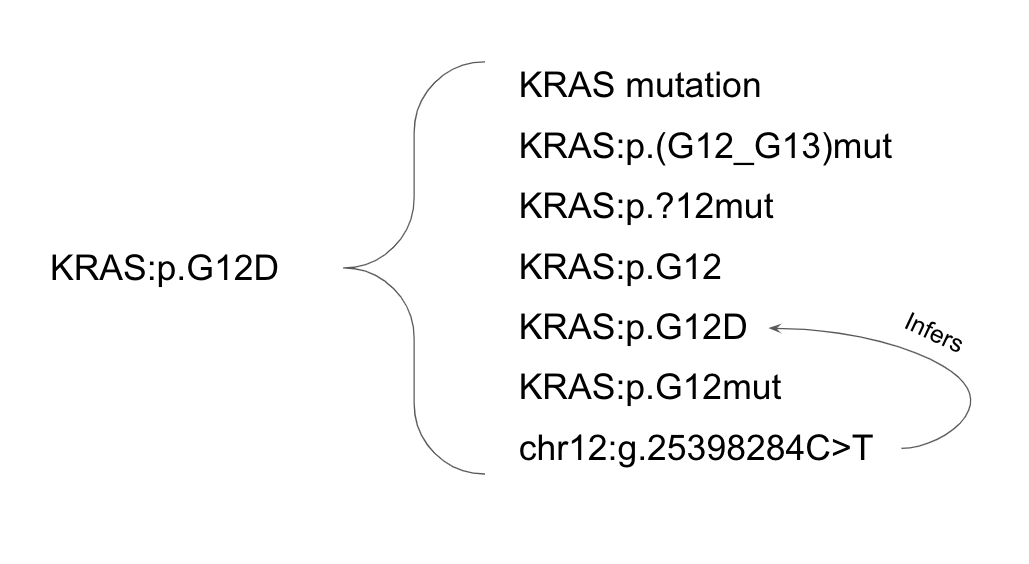General FAQ¶
How does Variant Annotation Work?¶
Variants are annotated using the GraphKB Python Adapter via the GraphKB REST API. In general this consists of the following steps
- Parse HGVS-like notation1
- Disambiguate via ontologies (gene name, variant type, etc.)
- Pull matching variant records
- Refine matches base on position information1
- Follows inferences (ex. g. -> p.)
- Pull statements for these variant records
This allows an input like KRAS:p.G12D to match to all equivalent forms of this variant. For example,
in the demo database it would result in the following matches

How do I cite PORI?¶
Please cite Reisle, C. et al. A platform for oncogenomic reporting and interpretation. Nat. Commun. 13, 1–11 (2022)
How Can I Migrate Our Existing KB to GraphKB?¶
The simplest way to do this is using the API. THere are a number of examples of loader/migration scripts in the loaders project which can be used as examples as well as instructions on best practices for adding or including your own. If you would like a new loader for a public/popular resource, please make a ticket/issue on this github space
Is there a Licensing Requirement for PORI Software?¶
No. PORI is fully open source. The entire platform is released under a GPL-3 open source license.
Is there a Licensing Requirement for PORI Data?¶
Data is loaded and added externally by the users themselves and therefore there is no licensing requirement. We do provided loading scripts for some externally licensed content, but it is left up to the user to arrange and a license agreement for these sources if they would like to use them. By default the loaders only load the open data.
How Can I Get Involved?¶
We welcome and encourage community contributions! If you have a feature request, bug report, or question please feel free to submit an issue to our GitHub page. If you are not sure which repository to submit the issue to, use this main one by default and we will move or direct the issue as required.
If you are a developer and would like to directly add and work on features, please submit a ticket for any new features and indicate that you would like to complete it or comment on an existing ticket. Following discussion with the main developers you should fork the repository and then submit a pull request from your forked version to the main repository. Please see the developer contributing guidelines here
How Can I Try This Out?¶
We have created a demo version of PORI for users to test without having to set anything up. Please see the IPR and GraphKB demos here
What is Second-Pass Matching?¶
Second-pass matching is built into the matching done by the IPR python adapter. First, variants are matched to statements. A second set of variants is then created using the subject and relevance of these matched statements. These newly created variants are passed back into matching to fetch statements. Any statements which are matched based on this second pass are labelled in IPR with the "inferred" flag.
An example of this might be that a user inputs a variant, KRAS:p.G12D, which matches to a statement with a relevance of "gain of function" and a subject of "KRAS". This then creates the new variant "KRAS gain of function" which matches to a second statement with the subject "EGFR inhibitor" and relevance "resistance". An inferred match of EGFR inhibitor resistance will be reported for KRAS:p.G12D.